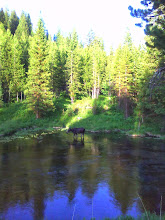I cite the following from Denis Howe’s Free On-Line Dictionary of Computing as a definition of the word “rococo,” when used as computer slang:
“Baroque in the extreme. Used to imply that a program has become so encrusted with the software equivalent of gold leaf and curlicues that they have completely swamped the underlying design. Called after the later and more extreme forms of Baroque architecture and decoration prevalent during the mid-1700s in Europe. Alan Perlis said: ‘Every program eventually becomes rococo, and then rubble.’”
While I use “rococo” to refer to new trends in art, it is because of computers that art is able to be as complex as it is, so Howe’s definition is appropriate in both ways.
Think of watching a film in a digital format. Whereas formerly films were on film stock and could be viewed once in special viewings, or they were transferred to video where they could be viewed multiple times with poor resolution, now films may be viewed multiple times in high resolution with a variety of features intended to enhance the movie-watching experience or increase the salability of the disc.
Far more attention is paid to small details than ever before because filmmakers know that viewers are able to stop frames and clearly see and analyze backgrounds. Commentators add information to the film so that multiple viewings are intended to include knowledge gained from the commentary. Often, there are multiple levels of commentary from different people. Films may be viewed with portions edited out or previously deleted scenes reinserted. All of this creates a level of complexity--”gold leaf and curlicues”--that has either been undesirable or unattainable since the 1920s in architecture, and the 1700s in painting. Never before in film.
My wife owns a landscape, done by an Idaho artist on computer. At first glance, it looks like a high resolution photograph, but it is really a painting, and it is far more high resolution than a photograph could ever be. Leaves on trees in the far distance are perfectly executed; nothing is out of focus; and variations of the painting may be purchased with fewer or more elements, such as wildlife. The detail is overwhelming.
I may take a piece of music, digitally record it, transfer it to an editable format, use my computer to add portions that would be impossible to play live, and render the music with almost invisible seams. In the case of the music, the “performance” may actually be rococo, but I mean to suggest that the possibility of working in the music at the smallest, most delicate levels, not executed in real time, but heard in real time, makes the experience itself rococo. It has almost unlimited complexity.
Certainly this is likely in rebellion against the starkness of modernism or minimalism. It represents a decisive step away from post-modernism.
Sunday, October 5, 2008
Subscribe to:
Post Comments (Atom)

1 comment:
Can't take credit for that definition. I stole it from the Jargon file.
-- Denis Howe, foldoc.org
Post a Comment